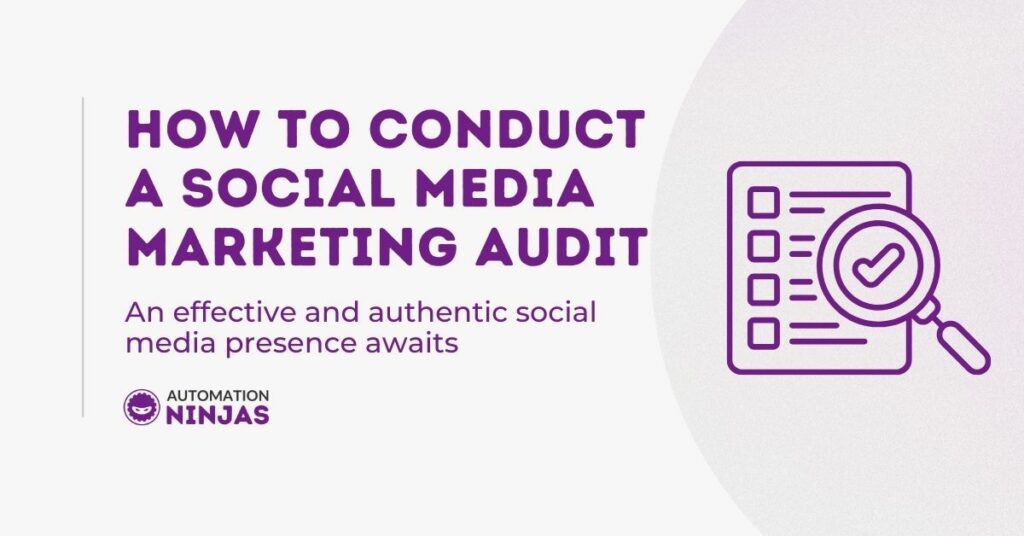How are you performing on the socials? Do you look at the stats? Do you take action based on the stats? What does your brand feel like on the social platforms? 4 big questions for you there.
Your social platforms should be where engagement happens, where you show your personality and where people interact with you. Your social media presence can be hugely relationship building.
If you’re a business owner, you already know the importance of social media to your brand - and you may or may not be acting on it.

Are you avoiding your social media?
I want to help you understand what a social media audit is
You’ve likely got a social presence, with some followers I hope, and you likely have a little plan for what you post, when and where. (whether that’s just in your head or in a mega spreadsheet!)
Because let’s face it, business owners, social media can take up a lot of our time. It’s important. And understandably so… It is the place to show your expertise, to engage with your customers, fans and prospects, it’s where you can show some serious personality and it’s where tribes can be built.

Building a tribe is kind of a big deal!
I want to show you how to conduct a social media audit
In this blog, I will take you through the steps of doing your own social media audit. Whether you’ve done one previously or not, I hope you’ll find some value in following along. We do things a little differently round here at Automation Ninjas, and I want to walk you through the methods we recommend. It’s not ALL about the stats, it’s about how your social presence feels too, and that’s often pretty intangible stuff.
Undoubtedly, getting clear on how you’re currently using your social media channels is the first step to getting a real social media strategy together, it’s a case of building on the work you’ve already done and asing “What’s next?” and setting some clear cut goals around improving your online presence.
I want to talk you through running an audit on Instagram, Facebook, Linkedin and Twitter - I know there are more social media platforms which need our attention, but I wanted to focus on ‘The Big Four’ here.
Running a social media marketing audit is something to get into the habit of. I recommend you make it another business routine. As with everything, the more regularly you do it, the easier it will become. Promise.
You've got this!
The best social media audits are data driven, and also take into account how the platform feels - which can be a little tricky when we run the platforms ourselves! We’re a little too close to cast a discerning eye.
Therefore when you’re conducting an audit on your own socials, you need to get into what I’m going to call ‘stranger mode’. You need to conduct this social media audit like you’ve never heard of your business… you’re a stranger, a complete newbie. It’s going to be important to be unbiased, not precious, and not too stubborn!
Breathe in, breathe out, you are a stranger.

Doing your own social media audit? You need to act like a stranger!
Let’s get started - social media analysis time
I’ve got some tangible steps ahead which take you through running your own social network analysis. I want you to consider these questions throughout - what’s working? What’s not working? What could there be more of? What should there be less of?
You might have never conducted a social media audit before, that’s ok - I’ve got you! Let’s roll up those sleeves, get your eyes sharpened for detail, take a breath in and remind yourself that not all audits have to be a boring slog.
How to conduct an audit of your social media
One of the keys to a powerful audit is to be data-led, so let’s start by drawing that data out across all your social platforms.
Draw out the data
Having documentation is super handy for sharing with your team and having a record of the precious data so you can track metrics and show off your successes! That’s not to say EVERYTHING to do with a social media audit is going to be trackable, there are some qualitative improvements to make too (the design, feel of the page etc, more on that later).
I want you to log into each of the big 4 platforms (Facebook, Instagram, Twitter and Linkedin), and draw out performance data.
‘For how long a time period?’ I hear you ask - well, I like to conduct a quarterly social media audit, so I look at the past 3 months as one chunk (rather than 3 separate months). Some people do this every single month, so look at what’s manageable for you and your business, and get downloading the reports! If you’ve never done an audit before, I would go back a whole year - downloading the data in 3-month-chunks.
If it’s not covered in the performance reports you’re downloading, make sure you log your followers/following count (if applicable to the platform) too.
What kind of spreadsheet do you need to track the social media metrics?
If you’re into keeping things neat and streamlined like me, once you have those performance reports, I recommend you create a new spreadsheet, with each separate platform’s stats on different sheets within that spreadsheet. We can call this the ‘master spreadsheet’ with all the metrics, from each platform, contained within.
This is the raw data we need to get some insight into how your social media profiles are performing. Each platform has individual things it reports on, it’s not the same across all of them.
There are specifics for each platform, but here’s some of the stats you’ll have data on:
How people found you (ie. referral traffic)
How many impressions each piece of your content earned, and the associated engagement rate
How many followers you have
A note on Instagram, currently, you can’t download performance reports with instagram (unless you have a fancy tool connected to your IG account. We like the look of Later’s Instagram Analytics for that) so be sure to track:
Average reach per post.
Average saves per post.
Engagement rate - which this little tool calculates for you.
Average Instagram stories views.
So in your master spreadsheet, you’ll have a tab for each of the 4 main platforms, that’s grand, but how about a summary of the reporting, a quick birds eye view?
Three things to do to make your social media audit spreadsheet super useful and informative:

Make your social media audit as useful as possible
1. Tracking changes: Tracking the % change from month to month / quarter to quarter.
2. Summary tab: I strongly suggest you set this up in the first tab of your spreadsheet - it’s the place to summarise your reporting and showcase the most important things. Eg. If you want to increase the amount of Facebook shares you’re getting month on month, pop that stat on the summary sheet. Same for if you’re really trying to up your engagement on your Instagram posts, make that stat really prominent by putting it on the first tab of the spreadsheet.
3. Conditional Formatting: A lovely bit of conditional formatting is a nice addition to your tracking spreadsheet - I like to set this up on the % change row - if the % change is up, it’s a lovely shade of green, if it’s down, it’s a scary red.
Time for a post mortem on the data
What content is performing well?
I love digging into each piece of content we’ve put out during that month, and checking on the performance.
Your reporting on each platform should give you all the info you need - ie. with Twitter reporting, I can see how many impressions each post got, how many engagements and the engagement rate (engagements divided by impressions)
This is real tangible info - If a tweet got a whopping engagement rate, it’s likely to be one of these things:
A topic I should tweet about more
A format of post people like - eg. GIF, image, video, poll.
Content talking about something popular - eg a trending hashtag, which was well received
My content became a conversation starter for my community
Basically - if your content gets high rates of engagement, do more posts like that!

Create more posts which give you great engagement with your followers
You’ll likely find that different content works better on different channels. Who said social media was easy huh!
Retweets and sharing of your posts is a powerful metric - this is a brilliant way to expand your reach, and an important metric to track.
How’s the impression rate? Does your content get shown to a decent sized audience?
Check out your growth rate. Look for any spikes in unfollow activity. If you have a spike, look to see if a certain post caused it.
How do your social media platforms feel?
Run through the following prompts - you might want to add the questions (and your answers) into the spreadsheet you created, or perhaps this is more of a written document. But here goes… Onwards with the audit!
Interaction with other accounts
Do you engage with other accounts? How often?
When did you last tag another account in a post?
Are you replying to the comments people leave on your content? And what about retweets (it’s always lovely to say thank you for the retweet!)
Activity
When were you last active on each platform?
How frequently are you posting?
Number of posts per platform?
Types of Content
For each of the platforms, are you giving a mix of content? Here’s the different broad categories - If there’s any you’re not using, how about it? Note down any ideas you’ve got for the coming quarter.
Photos
Videos
Articles
Share a story
Live videos
Sharing others content
Quotes
Music
Behind the scenes
Testimonials
Quizzes/polls
Call(s) to Action
Are you including calls to action in your social content? Your CTA may be a push for people to purchase or consume some of your content on your site. Your content should include some of these, for sure. Share that blog content! Share your products!
Just keep a balance of it, don’t ram it down their throats.

You can’t always be shouting your calls to action from the rooftops
It’s important to write engaging copy around getting people to click on your website content.
Reasons to believe
An important part of the audit, I love this bit!
You’ve got your stranger hat on right now, yes? I want you to assess your content over the past period, looking for how you give people ‘reasons to believe’ in you.
Social content pieces which build a relationship with the new lead is what we’re looking for, content which positions you as the good guy in their minds, which gives them reasons to believe in you... The more you show your prospects you’re more than "just an x company", the more you share how you’re different, and what the benefits of your product/service is, the better (but again, have some balance here and don’t ram it down their throats!) Here’s some ideas for ‘reasons to believe’ content:
- Shoutouts to your followers/purchasers, like how we’ve done here.
- Posting quality articles which help educate the reader and position you as an expert who loves expert information!
- Sharing testimonials or nice things people have said about you
- Sharing the benefits of what you do/sell, in a natural way
Coherency
Take a quick look -
- Do all your social media profiles share the same branding? Look at both profile pix and cover photos.
- Are your logos high enough definition?
- Does your info need updating?
- Do you have all the info bits filled out on Facebook business profile?
Hashtags
How is your use of hashtags? Are you including them? Do you include too many of them? (It can be kinda annoying!)
This article from Social Media Examiner is a real deep dive into the use of hashtags specifically on Instagram, and includes a couple of lovely little videos for your perusal. Another resource for you is this article which covers all the platforms.
Personality
How often are you posting non-industry specific, topical and non-topical, personality driven content? For example, on the Automation Ninjas Twitter, I regularly share tweets which just have the words ‘this pleases us’ alongside something which literally, did please us! Here’s some for ya:

Show your personality by sharing the things you personally like

Our ‘this pleases us’ posts don’t relate to our industry, they’re shareable nice things

Engage your audience by showing personality in sharing interesting things
A final few questions:
- Are there any of the 4 social platforms you’re not on? Why not?
- Have you got a pinned post on your Facebook or Twitter? This can be a handy way to get your voice across to people who visit your profile page.
What happens when your social media audit is complete?
So you’ve done your data analysis, you’ve summarised how you’re performing and what the feel is of the channels. I’ve got one more set of questions…
Takeaways
I want you to write a little summary here - answer these 4 questions in relation to your social media presence, they’re the final pieces in you completing your audit - it’s a marriage of data and the ‘feeling’ behind the presence, so don’t skip these!
- What are you doing well?
- How could you improve?
- What do you like about your socials?
- What do you dislike about your socials?
It should feel quite clear to you where the gaps lie and what you could make your focus for the coming period

Stay focused on your social media presence
Summing up your findings and committing to making changes which will make a positive impact on your social presence. Now you know where you stand, put that data to work!
What goals could you commit to? Here are some ideas for Social Media Marketing goals:
Spend x more time on social media every week
Research and schedule 50 posts across all channels
Increase of x amount of followers per month on x platform
Growth of x% in followers across all platforms
Aim to get X retweets every month
Increase the average engagement rate of your Facebook posts by x%
How often should you conduct a social media audit?
Any business owner should be keeping an eye on the socials regularly - I recommend you make time for tracking your socials monthly - tracking the stats (even just the basic ones) and setting goals for the month ahead.
Social media audit wise, I recommend it should be on your priority list to complete an audit every 3-6 months. It’s a great line in the sand to see how your efforts have been performing, what’s missing, what you’re not doing enough of, what people are loving, all of the things!
With social media being such a backbone of business, I’m always aware of the flame of your commitment to improving social media going out.

Don’t blow the candle out.
With so many pulls on time, be sure to keep your social media audit ring fenced and prioritised.
How much does a social media audit cost?
We’ve taken the pain out of your social media audit - hand it over to us. We’ll not only see where you’re at NOW with your social media - in the form of a data-lead social media audit, but we will check in with you after 6 months, reassessing how your socials are doing, and will hit you with a fresh set of recommendations and insight.
Thanks for following along, the next step for you is to schedule in that social media audit of yours. Get into the routine of it, it’ll get easier the more times you run this audit. A huge benefit of running a regular social audit is that you’ll feel more and more confident in setting goals around improving your presence.
And I really hope you smash those goals. If you have any questions speak to us directly.
Onwards - to an effective and authentic social media presence.


